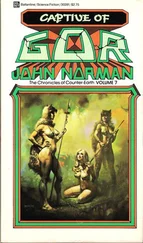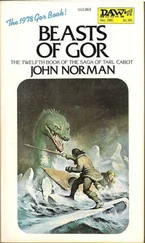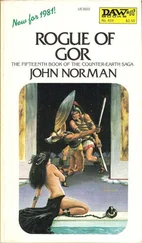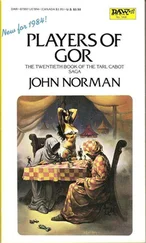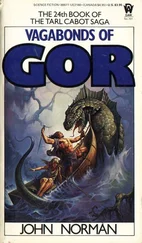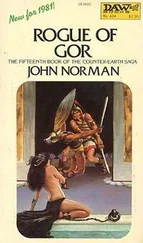It was a busy day for Kamchak.
He did not buy the kaiila near the wagon of Yachi of the Leather Workers though it was apparently a splendid beast.
At one point, he wrapped a heavy fur and leather robe-about his left arm and struck the beast suddenly on the snout with his right hand. It had not struck back at him swiftly enough to please him, and there were only four needle like scratches in the arm guard before Kamchak had managed to leap back and the kaiila, lunging against its chain, was snapping at him.
“Such a slow beast,” said Kamchak, “might in battle cost a man his life.” I supposed it true. The kaiila and its master fight in battle as one unit, seemingly a single savage animal, armed with teeth and lance. After looking at the kaiila Kamchak visited a wagon where he discussed the crossing of one of his cows with the owner’s bull, in exchange for a similar favour on his own part. This matter was arranged to their mutual satisfaction. At another wagon he haggled over a set of quiva, forged in Ar, and, obtaining his price, arranged to have them, with a new saddle, brought to his wagon on the morrow. We lunched on dried bosk meat and Paga and then he trooped to the wagon of Kutaituchik, where he exchanged pleasantries with the somnolent figure on the robe of grey boskhide, about the health of the bosk, the sharpness of quivas and the necessity of keeping wagon axles greased, and certain other matters. While near Kutaituchik’s wagon, on the dais, he also conferred with several other high men among the Tuchuks. Kamchak, as I had learned before, held a position of some importance with the Tuchuks. After seeing Kutaituchik and the others, Kamchak stopped by an Iron Master’s wagon, and, to my irritation, arranged for the fellow to come by the wagon that very night. “I can’t keep her in a sleen cage forever,” Kamchak said. “There is work to be done about the wagon.” Then, to my delight, Kamchak, borrowing two kaiila, which he seemed to have no difficulty doing from a Tuchuk warrior I had not even seen before rode with me to the Omen Valley.
Coming over a low, rolling hill, we saw a large number of tents pitched in a circle, surrounding a large grassy area. In the grassy area, perhaps about two hundred yards in diameter, there were literally hundreds of small, stone altars. There was a large circular stone platform in the centre of the field.
On the top of this platform was a huge, four-sided altar which was approached by steps on all four sides. On one side of this altar I saw the sign of the Tuchuks, and on the others; that of the Kassars, the Kataii and the Paravaci. I had not mentioned the matter of the Paravaci quiva which had almost struck me last night, having been in the morning disturbed about the disappearance of Elizabeth Cardwell and in the afternoon busy following Kamchak about in his rounds. I resolved to mention the matter to him sometime but not this evening for I was convinced this would not be a good evening for anyone in the wagon, except perhaps for Kamchak, who seemed pleased about the arrangements he had made with the herder pertaining to crossing livestock and the bargain, it seemed, he had contracted with the fellow with the quivas and saddle.
There were a large number of tethered animals about the outer edge of the circle, and, beside them, stood many haruspexes. Indeed, I supposed there must be one haruspex at least for each of the many altars in the field. Among the animals I saw many verrs; some domestic tarsks, their tusks sheathed; cages of flapping vulos, some sleen, some kaiila, even some bosk; by the Paravaci haruspexes I saw manacled male slaves, if such were to be permitted; commonly, I understood from Kamchak, the Tuchuks, Kassars and Kataii rule out the sacrifice of slaves because their hearts and livers are thought to be, fortunately for the slaves, untrustworthy in registering portents; after all, as Kamchak pointed out, who would trust a Turian slave in the kes with a matter so important as the election of a Ubar San; it seemed to me good logic and, of course, I am sure the slaves, too, were taken with the cogency of the argument. The animals sacrificed, incidentally, are later used for food, so the Omen Taking, far from being a waste of animals, is actually a time of feasting and plenty for the Wagon Peoples, who regard the Omen Taking, provided it results that no Ubar San is to be chosen, as an occasion for gaiety and festival. As I may have mentioned, no Ubar San had been chosen for more than a hundred years.
As yet the Omen Taking had not begun. The haruspexes had not rushed forward to the altars. On the other hand on each altar there burned a small bosk-dung fire into which, like a tiny piece of kindling, had been placed — an incense stick.
Kamchak and I dismounted and, from outside the circle, watched the four chief haruspexes of the Wagon Peoples approach the huge altar in the centre of the field. Behind them another four haruspexes, one from each People, carried a large wooden cage, made of sticks lashed together, which contained perhaps a dozen white vulos, domesticated pigeons.
This cage they placed on the altar. I then noted that each of the four chief haruspexes carried, about his shoulder, a white linen sack, somewhat like a peasant’s rep-cloth seed bag.
“This is the first Omen,” said Kamchak, “The Omen to see if the Omens are propitious to take the Omens.”
“Oh,” I said.
Each of the four haruspexes then, after intoning an involved entreaty of some sort to the sky, which at the time was shining beneficently, suddenly cast a handful of something doubtless grain to the pigeons in the stick cage.
Even from where I stood I could see the pigeons pecking at the grain in reassuring frenzy.
The four haruspexes turned then, each one facing his own minor haruspexes and anyone else who might be about, and called out, “It is propitious!”
There was a pleased cry at this announcement from the throng.
“This part of the Omen Taking always goes well,” I was informed by Kamchak.
“Why is that?” I asked.
“I don’t know,” he said. Then he looked at me. “Perhaps,” he proposed, “it is because the vulos are not fed for three days prior to the taking of the Omen.”
“Perhaps,” I admitted.
“I,” said Kamchak, “would like a bottle of Paga.”
“I, too,” I admitted.
“Who will buy?” he asked.
I refused to speak.
“We could wager,” he suggested.
“I’ll buy it,” I said.
I could now see the other haruspexes of the peoples pouring with their animals toward the altars. The Omen Taking as a whole lasts several days and consumes hundreds of animals. A tally is kept, from day to day. One haruspex, as we left, I heard cry out that he had found a favourable liver.
Another, from an adjoining altar had rushed to his side. They were engaged in dispute. I gathered that reading the signs was a subtle business, calling for sophisticated interpretation and the utmost delicacy and judgment. Even as we made our way back to the kaiila I could hear two more haruspexes crying out that they had found livers that were clearly unfavourable. Clerks, with parchment scrolls, were circulating among the altars, presumably, I would guess, noting the names of haruspexes, their peoples, and their findings The four chief haruspexes of the peoples remained at the huge central altar, to which a white bosk was being slowly led.
It was toward dark when Kamchak and I reached the slave wagon to buy our bottle of Paga.
On the way we passed a girl, a girl from Cos taken hundreds of pasangs away in a raid on a caravan bound for Ar. She had been bound across a wagon wheel lying on the ground, her body over its hub. Her clothing had been removed. Fresh and clean on her burned thigh was the brand of the four bosk horns. She was weeping. The Iron Master affixed the Turian collar. He bent to his tools, taking up a tiny, open golden ring, a heated metal awl, a pair of pliers. I turned away. I heard her scream.
Читать дальше




